Homemade Ketchup
This post may contain affiliate links. See my disclosure policy.
A from-scratch homemade ketchup recipe using fresh tomatoes! The fresh and vibrant flavor of homemade is simply unrivaled. And this ketchup is approved for canning so you can enjoy it all year long!
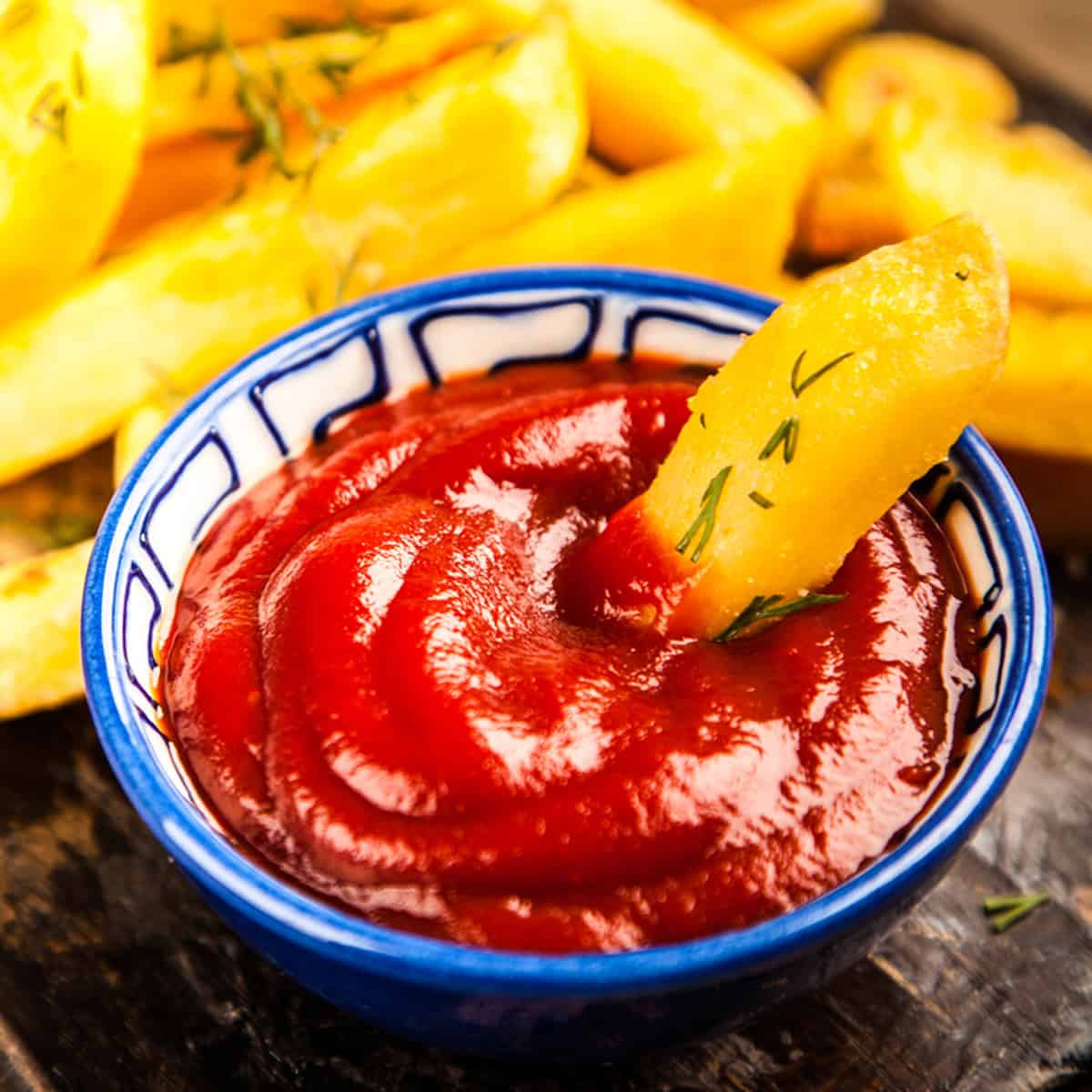
Being from Germany and having lived several years in England, I’m partial to European ketchup (and mayo, but that’s a different topic). We got back last month from a trip to the UK and while we were there I was looking for some ketchup to bring back to our vacation cottage. I was looking for a brand with the fewest possible ingredients (meaning no junk ingredients), and discovered a brand I hadn’t tried before, Wilkin & Sons Tomato Ketchup. We all loved the freshness and the flavor of that ketchup, so when I got home I immediately went to work to recreate that flavor profile from memory with the sun-ripened tomatoes that were waiting for me in our garden. I’m extremely happy with the results andI think you’re going to love it too!
Why Homemade Ketchup?
I’ve heard the question often: why would you take the time to make something as ubiquitous as ketchup that is so easily and cheaply bought? And my answer is the same as it is for any homemade sauces and condiments: Because the flavor is UNBEATABLE. Period. It’s fresher, more robust, vibrant, and deliciously nuanced than anything you’ll ever find at the store. That reason alone is why I make my own ketchup. But there are other advantages. It gives you full control over what’s in it and, more importantly, what’s not in it. No junk ingredients, preservatives, additives, “natural” flavors or that FDA approved catch-all “spices” (don’t get me started on that one). And making your own also allows you to customize the flavor by tweaking the spices to your taste.
Yes, homemade ketchup is so vastly superior and until you’ve experienced the difference you won’t understand what you’re missing! Whether you’re a fellow gardener looking for more ways to put your harvests to use or you simply appreciate good, quality food, this homemade ketchup is for you!
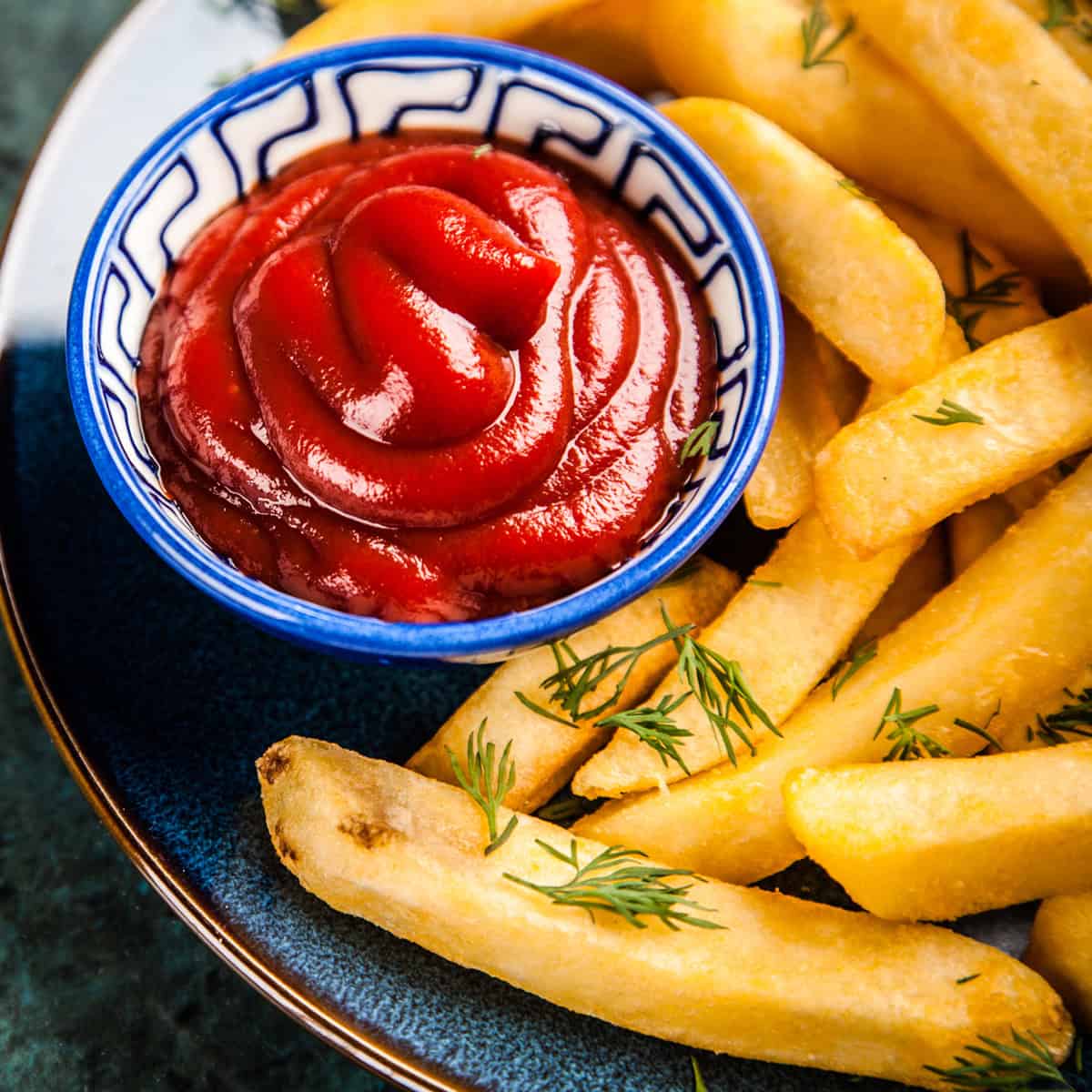
Homemade Ketchup from Fresh Tomatoes!
Every year I vow I’m going to downsize my vegetable garden. And every year that never happens. In fact, in true Kimberly fashion, the last two years in a row I ended up up-sizing it. Like my tomato section that I recently increased to six 32-foot long rows. I have over 50 heirloom tomato varieties of all shapes, sizes and colors and the past couple of years I hit a record by growing around 70-80 tomato plants from seed. Yes, I’m a little crazy. But part of the enjoyment of gardening for me is giving away that beautiful fresh produce we grow to friends and people in the community, and we give away the majority. And as for the tomatoes, it’s so incredibly rewarding making delicious things out of the bounty of fresh, sun-ripened tomatoes like my Creamy Tomato Soup, Marinara Sauce, Sun Dried Tomatoes, Canned Diced Tomatoes, Tomato Bread, and Fried Green Tomatoes. And today I’m going to show you how to make homemade ketchup with fresh tomatoes!
For my fellow gardeners, for paste tomatoes I regularly grow a tomato variety called Amish Paste as well as San Marzano’s. But my favorite paste tomato of all for sheer size and dense meatiness is Hungarian Heart. (The picture below is none of these varieties, these are just some other pretty tomatoes from my garden for inspiration :) If you have a favorite paste tomato to recommend please let us know in the comments below!
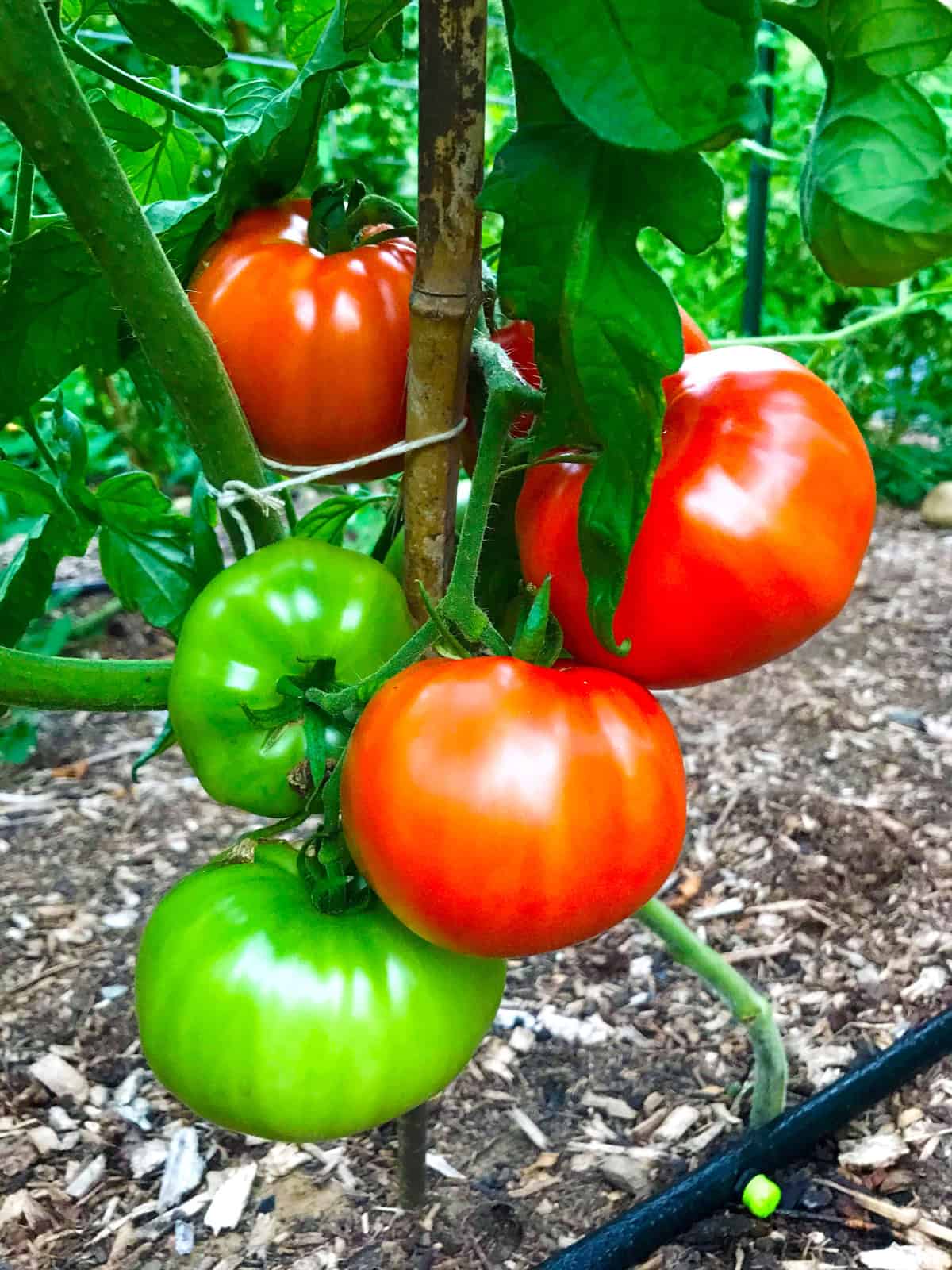
How to Make Ketchup
The process of making homemade ketchup is a simple one. All it takes is a few ingredients and some patience. The tomatoes are simmered with onions until much of the water is evaporated and then they’re further simmered with vinegar that’s been infused with spices. The mixture is then run through a food mill to remove the bitter seeds and skins to create a superior flavor and velvety smooth texture, and then it’s simmered a final time until the liquid is mostly evaporated and the mixture has thickened into the consistency of ketchup.
Can I Substitute Canned Tomatoes?
This recipe for homemade ketchup is specifically for fresh tomatoes. I have not tried it using canned tomatoes and so I haven’t worked out an accurate equivalent. Some online sources say that 12 pounds of fresh paste/Roma tomatoes is roughly equivalent to six 28-ounce cans of tomatoes (specifically, 1 pound of fresh Roma tomatoes equals one 14.5-ounce can), but I have not verified that for accuracy or how that translates for using that equivalent for this recipe.
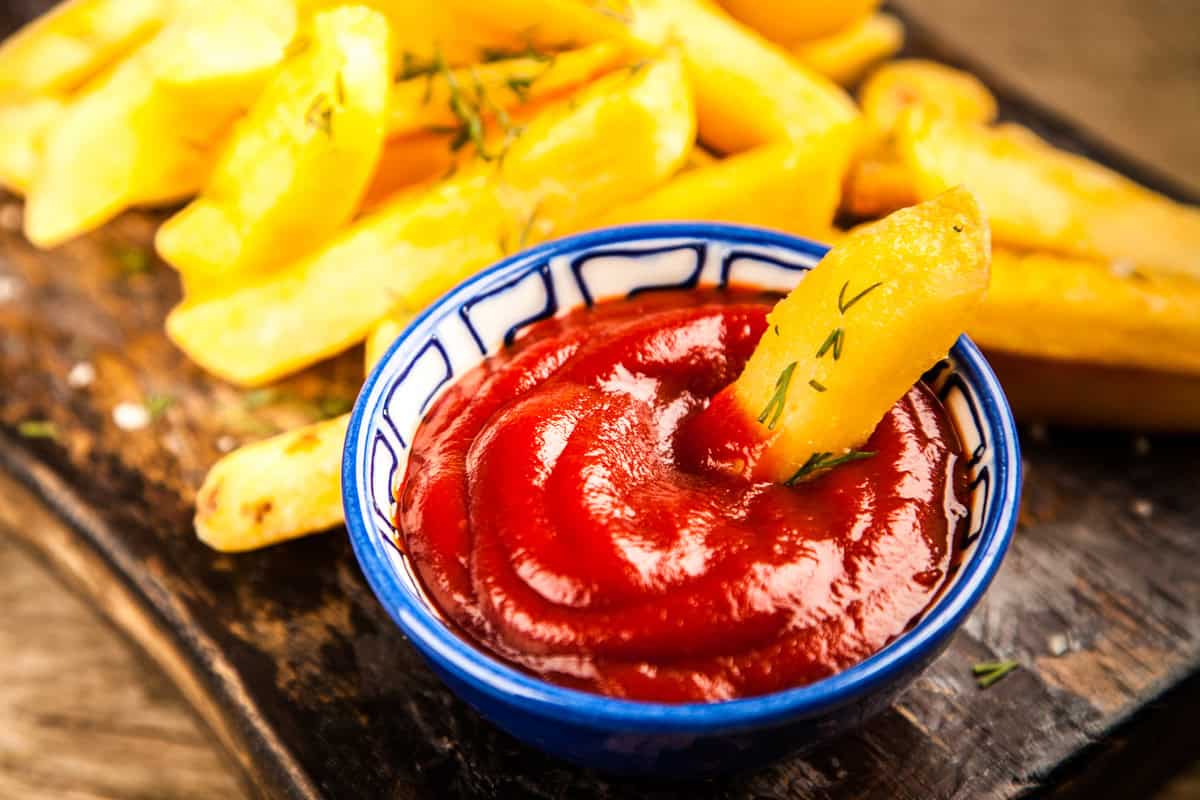
Pro Tips for Making Homemade Ketchup
While the process is simple enough, there are few key things to consider in order to ensure a successful batch. Let’s take a look at those:
- Use the Right Tomatoes: It may be tempting to dump whatever tomatoes you have access to into a large pot and hope you’ll get tomato ketchup at the end. But using the right kind of tomato is the first and most important step and will save you considerable frustration. To make ketchup you need paste tomatoes. Paste tomatoes are specifically for things like tomato sauce. That’s because unlike other tomato varieties, they are very “meaty” – meaning they have few seeds, far less water, and a lot more tomato flesh. Why is this important when making ketchup? Because getting a thick tomato paste consistency is entirely dependent on both 1) eliminating the excess water from the tomatoes through a long simmer time and 2) using tomatoes that actually have enough tomato flesh to reduce down to a paste. If you use non-paste varieties you will end up with a big pot of liquid and a lot of frustration. Choose the fleshiest paste tomatoes you can find. The typical Roma tomatoes at the grocery store are less than terrific (not very fleshy or flavorful) but if that’s what you have access to, use those.
- Use a Food Mill: I’ll be the first to tell you that when there’s a good shortcut to be had, I’ll happily take it; there’s no need to make more work for you than necessary. But while some recipes call for using a blender to puree the tomato mixture and thus bypass removing the seeds and skins, that’s not a shortcut I recommend if you want the best flavor and texture. By using a food mill you avoid the bitterness that the broken seeds impart and you’ll get a deeper, richer tomato flavor and more velvety texture. Plus a food mill is an indispensable gadget to have your kitchen if you make things like like tomato sauce and blackberry jam or other jams that require seed removal. You can use a manual food mill (you can often find these in thrift stores!) or an electric food mill, both of which I own and have used with success. There is also a Kitchenaid food mill attachment which I have not tried. If you aren’t as concerned about the best results possible, you can forego the food mill and use a high-powered blender to puree the mixture instead.
- Use a Blender: Unless you prefer a chunkier texture, I recommend pureeing the ketchup at the very end for a smooth consistency. If you don’t blend it the mixture will also be less cohesive and prone to separating (small tomato chunks in liquid). You can use an immersion blender or a regular blender like a high-powered Vitamix, which is what I use.
- Monitor the Heat and Stir Regularly: There’s nothing worse than your tomatoes getting scorched on the bottom of the pot because that potently bitter flavor will permeate through and ruin the entire batch. So make sure to monitor the heat and, very importantly, to stir the mixture regularly, scraping the bottom of the pot, to prevent the tomatoes from sticking to the bottom and scorching. You will need to increase the frequency of stirring towards the end after a lot of the liquid has evaporated.
- Stovetop Pot vs. Slow Cooker: A common question is, can I make ketchup in a slow cooker? The answer is yes, you can. But the whole advantage of a slow cooker is that it’s supposed to be hands-off. You put the stuff in and walk away and don’t come back until it’s done. That’s not the case with homemade ketchup for the reason I mentioned above: it requires monitoring and regular stirring. In other words, you’ll have to monitor the slow cooker in the same way you’d have to monitor a stovetop pot. So as long as you’re aware of that you can use either according to your preference.
- Be Patient: A lot of recipes call for letting the tomato mixture simmer for just 45 minutes followed by another 30 minutes or so. And I have to seriously question whether those authors have actually made the recipe they’re sharing, because in my experience it takes VASTLY longer for the excess water to evaporate sufficiently enough to reduce down to a paste. As in 3-4 times longer. Bottom line, it will take quite a while for the water to evaporate and you don’t want to speed things up by increasing the heat or you’ll risk scorching the tomatoes. Over time, as you continue to monitor and stir the mixture, you’ll see it thicken. Once it has thickened to the consistency of commercial ketchup it’s done. Getting the right consistency is ALL about allow the excess water to evaporate, so if in doubt simply let it simmer longer.
- Final Flavor Adjustments: Towards the end when the mixture has evaporated and thickened, taste it and decide if the flavor needs adjusting. You can add more vinegar or sugar, more salt or more spices according to your taste.
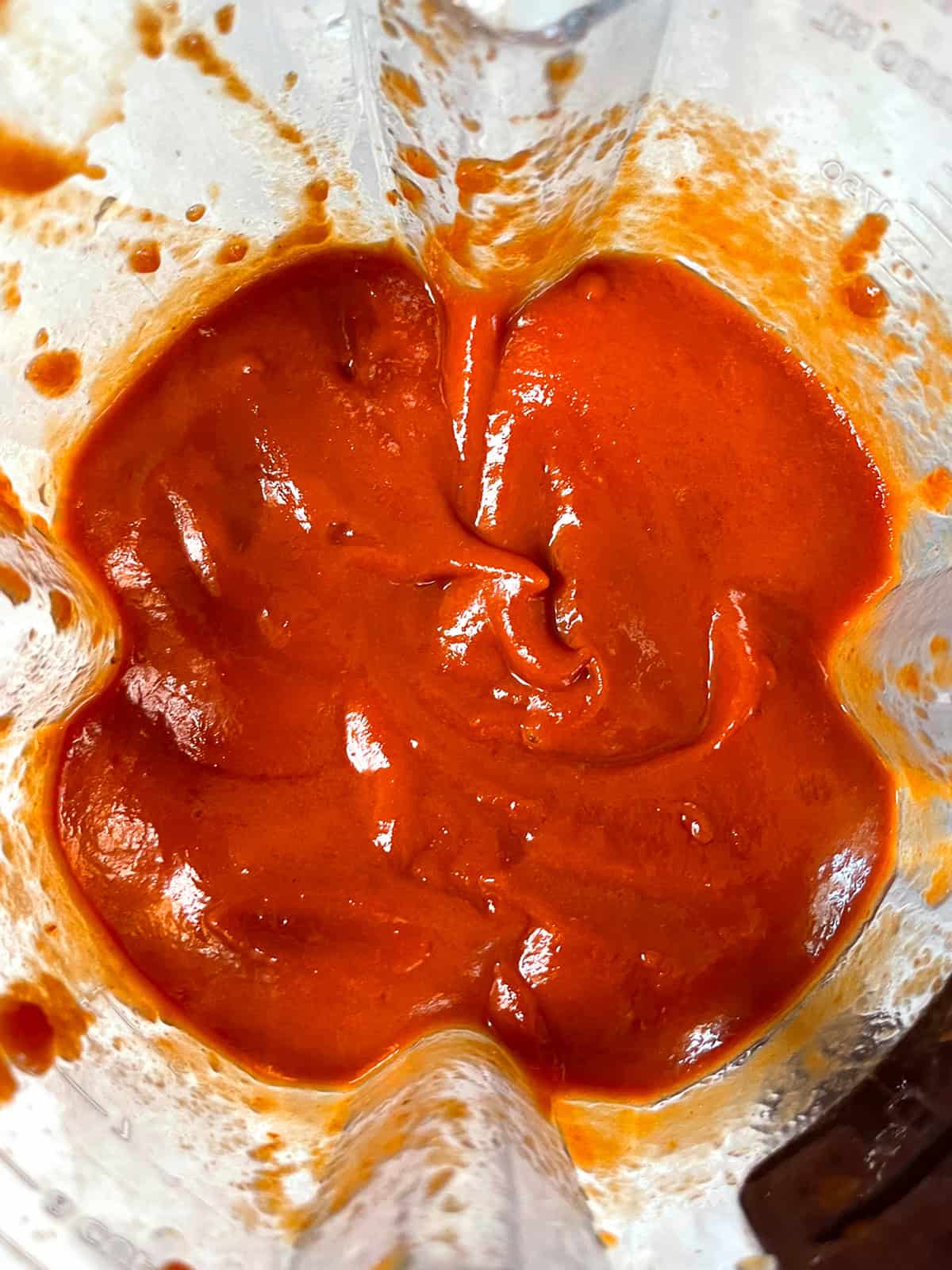
Homemade Ketchup Recipe
Let’s get started!
First we’re going to make the spiced vinegar which we’ll add to the tomato mixture later: Put the apple cider vinegar, red wine vinegar and lemon juice in a saucepan with the cloves, celery seeds, allspice berries, peppercorns and cinnamon stick and bring it to a boil. Boil for 2 minutes, then turn off the heat and let it sit for at least 30-60 minutes (this can be done well in advance). Strain and discard the spices.
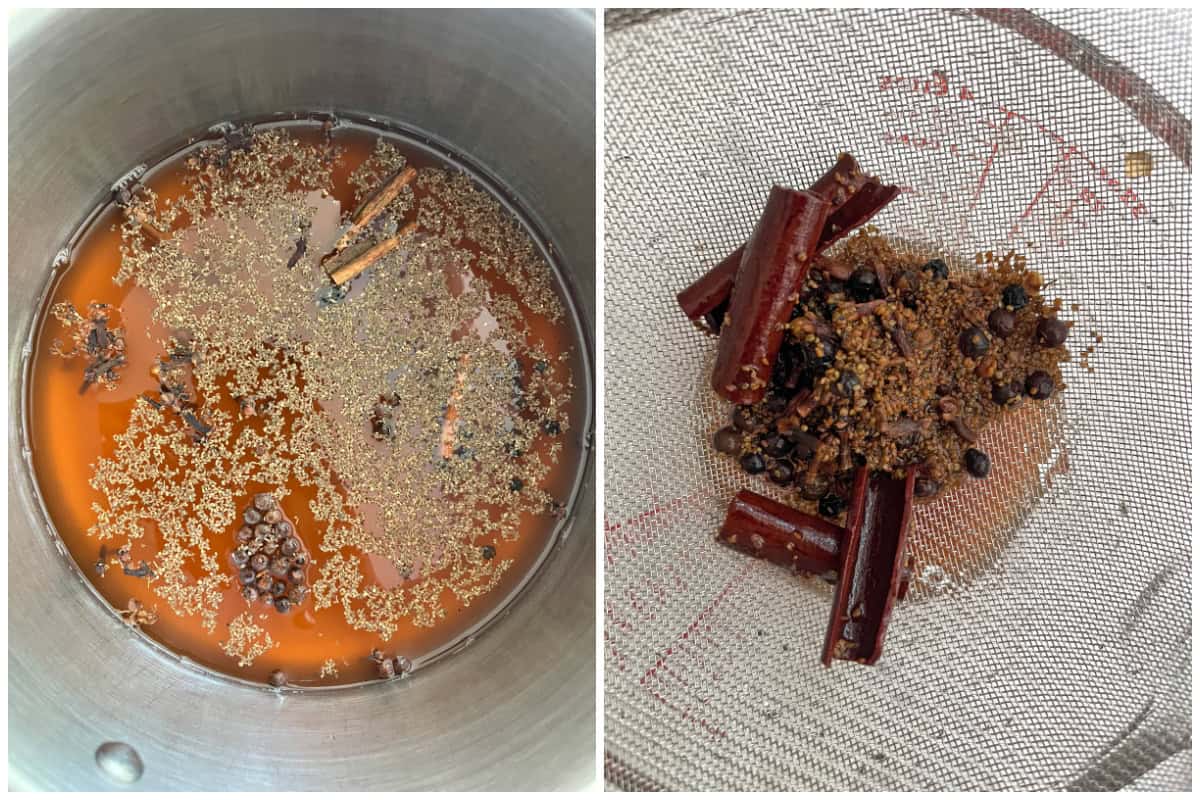
My recipe calls for 12 pounds of tomatoes, which yields about a quart of ketchup, and for that you’ll need a large stock pot. For point of reference, I’m using an 8 quart stock pot in the photos and that’s really pushing it (you’ll get some initial splattering until the liquid has reduced by an inch or so), so I recommend using a 10 quart stock pot (or larger).
Put the tomatoes in the pot along with the chopped onions, paprika, garlic powder, onions powder and ground mustard.
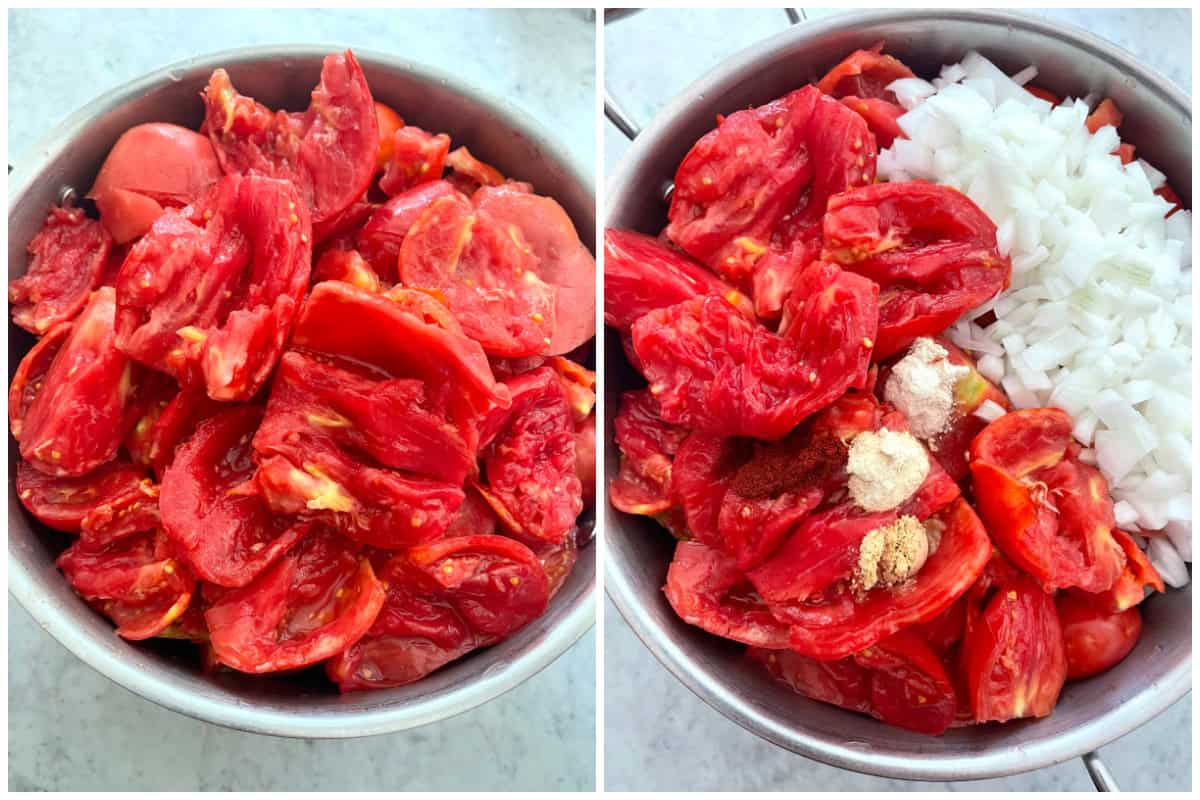
Mash the tomatoes down a bit with a potato masher to release some of the juices. Bring the tomatoes to a boil, reduce the heat, and boil gently, uncovered, for 45 minutes or until the mixture is reduced by roughly 1/4, stirring occasionally.
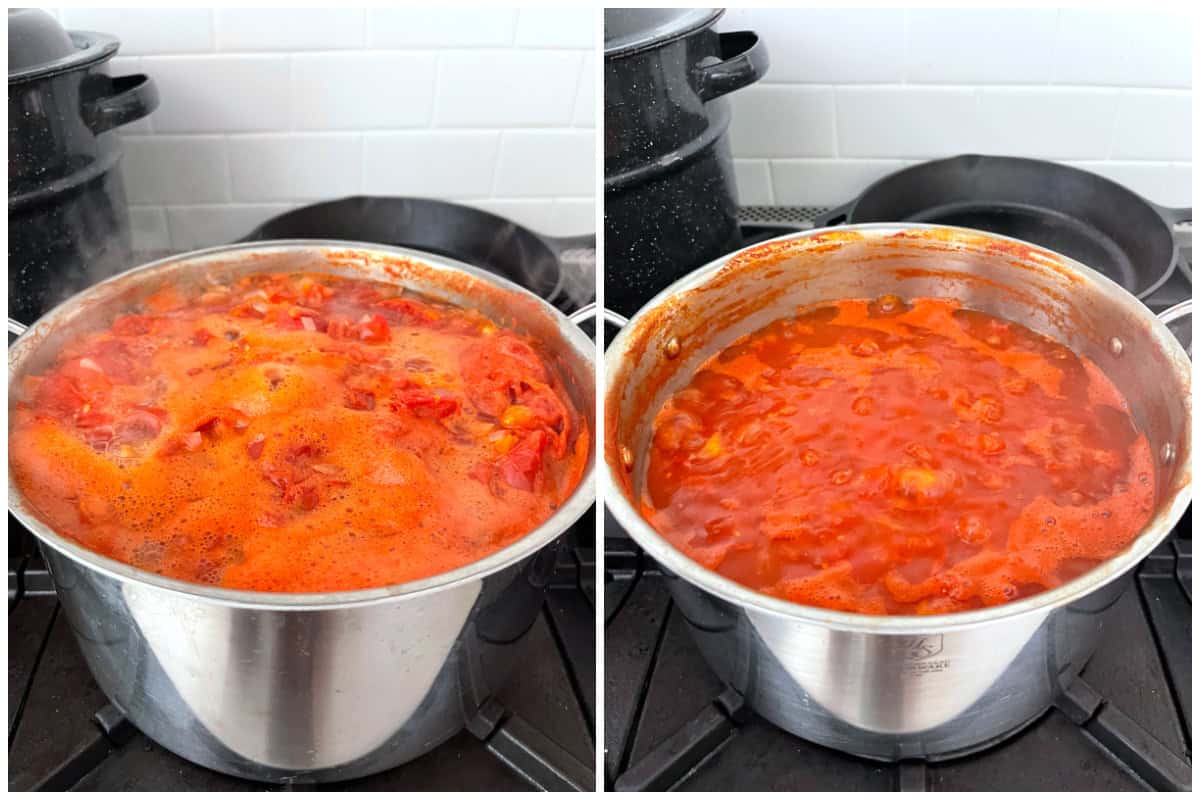
Pour in the spiced vinegar.
Return the mixture to a boil, reduce the heat, and gently boil uncovered for another 45 minutes or until the mixture is reduced by another inch or so, or nearly half of what it was at the very beginning.
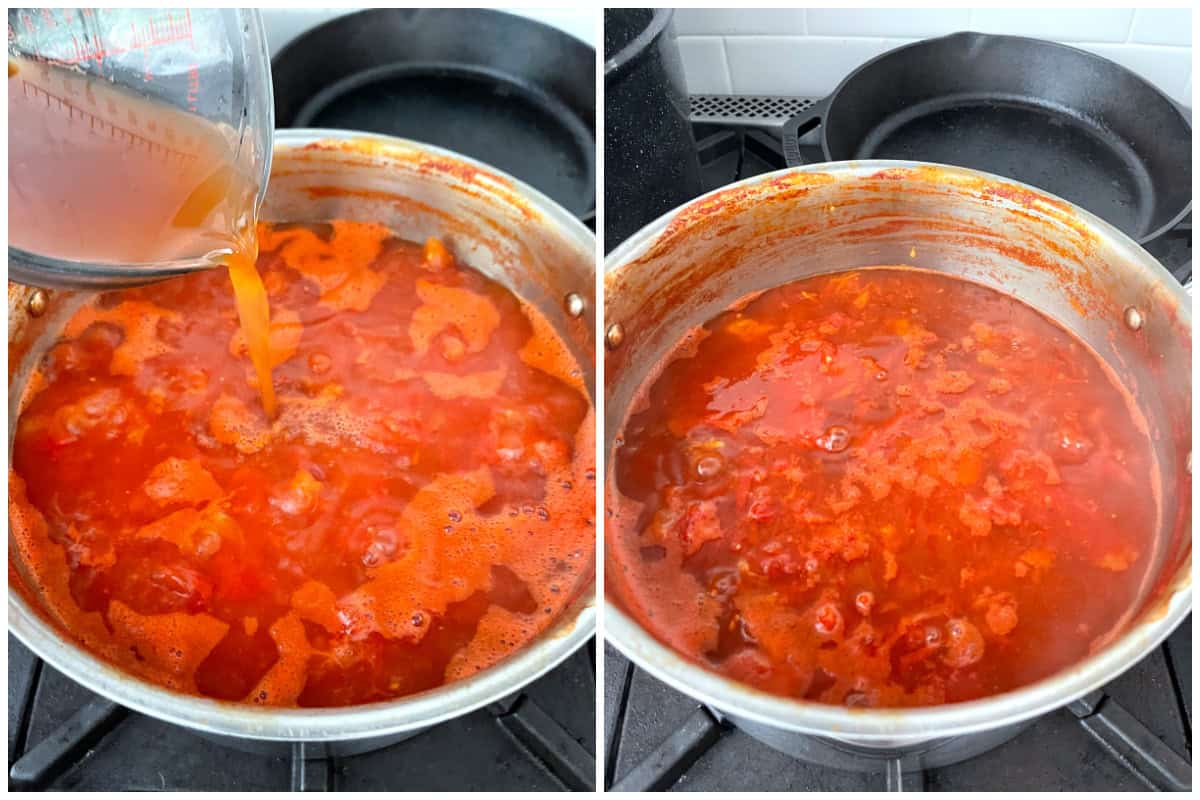
Let the tomato mixture cool for just a few minutes so it’s not scorching hot to work with.
Working in batches, run the mixture through a food mill (I’m using this electric food mill but you can also use a manual food mill which is just as effective). See my “Pro Tips” section above for an explanation about using a food mill and alternatives.
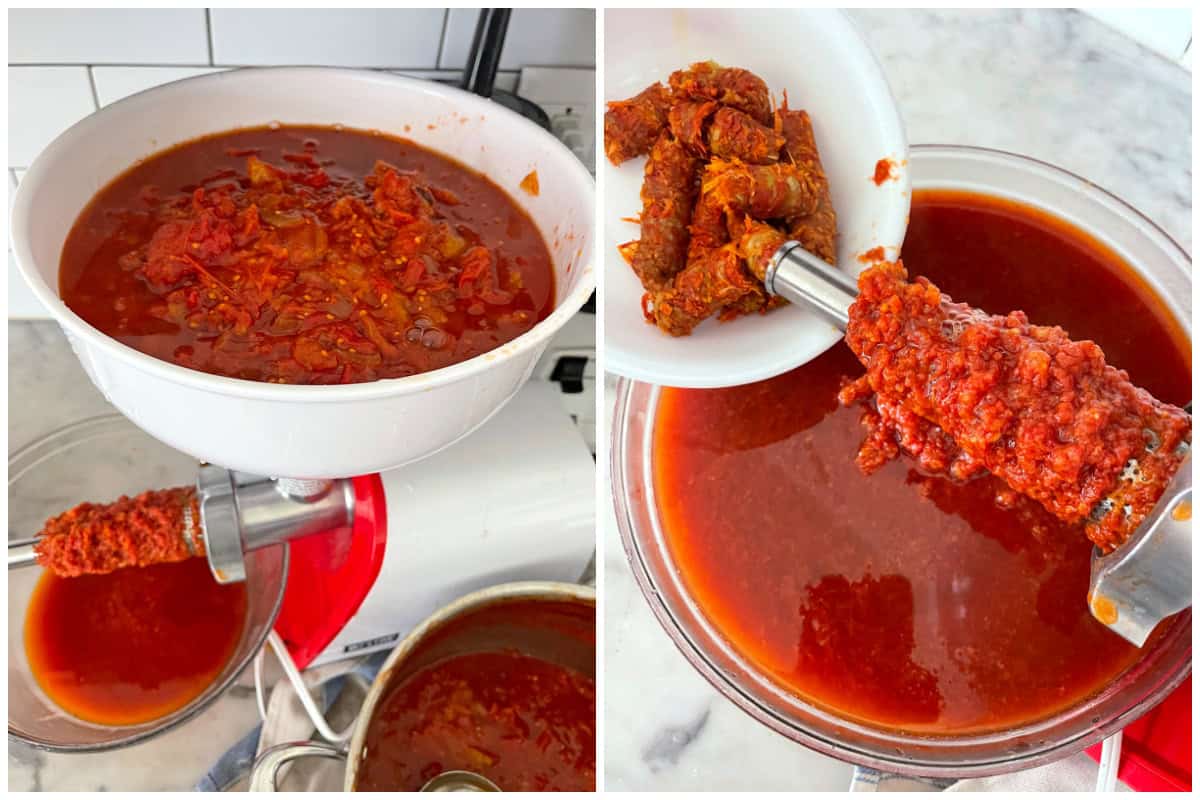
Discard the seeds and tomato skins.
You’ll be left with a bowl of what looks like tomato juice and watery tomato bits. Don’t panic that it doesn’t remotely resemble ketchup at this point!

Transfer the tomato mixture back to the pot and add the sugar and salt.
Bring the mixture to a boil, reduce the heat and gently boil uncovered, stirring frequently until the mixture is reduced by half and is thick like ketchup. This will take at least 1-2 hours depending on the circumference of your pot and the heat level.
Note: Do not try to speed up the process by increasing the heat or the tomato mixture will burn. Be sure to stir more frequently as the mixture thickens to prevent burning.

The mixture is done when you have a thick tomato paste consistency with very little water separating from the tomatoes. See my photos for a point of reference.
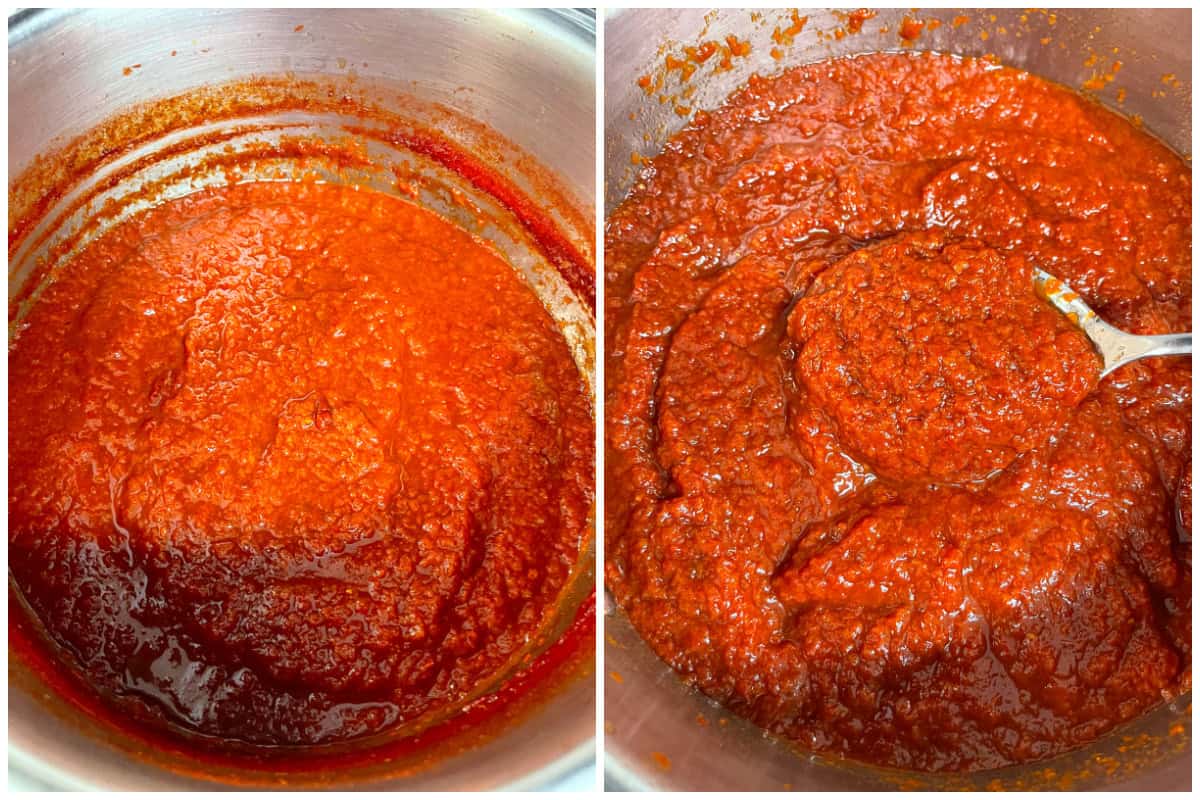
The final step is to puree the tomato mixture in a blender at high speed (I use my Vitamix).
Puree the tomato mixture at high speed until it is smooth and creamy.
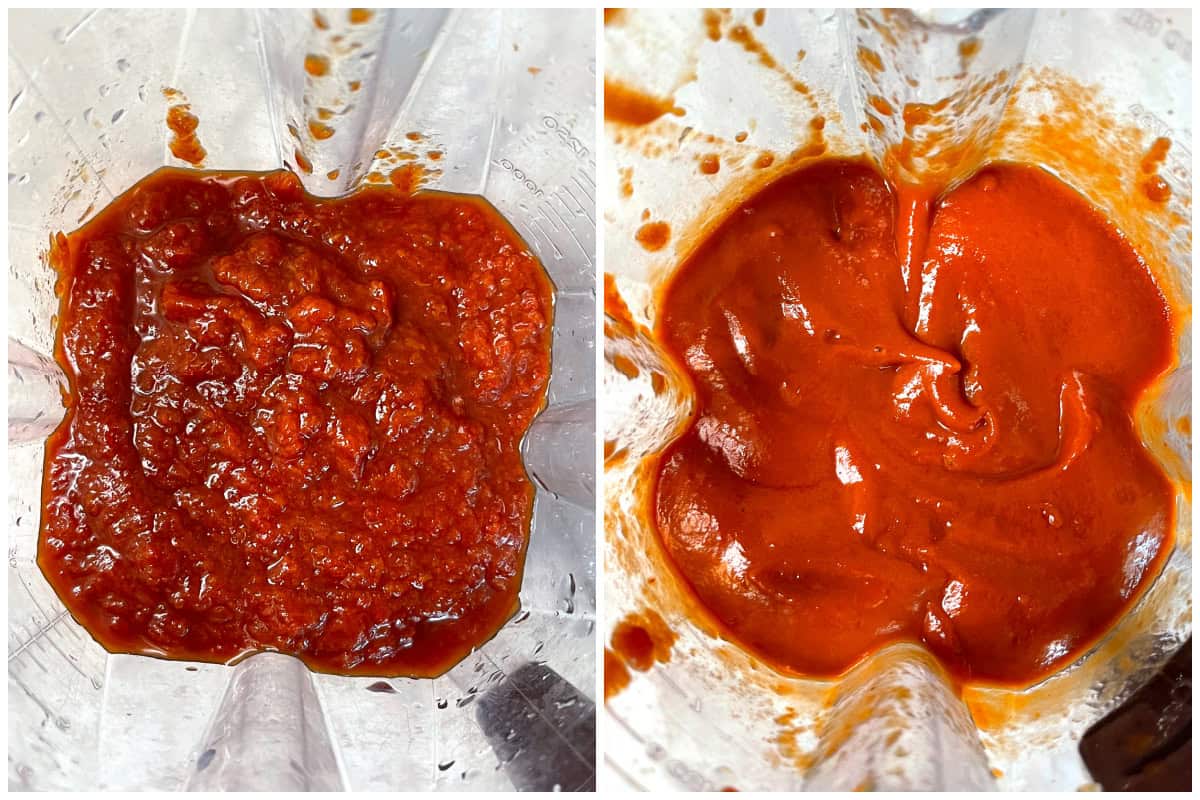
My recipe uses 12 pounds of tomatoes which will give you roughly 2 quarts (1.89 liters), or 8 cups of finished ketchup.
Transfer the homemade ketchup to airtight glass storage jars to keep in the fridge (it will keep for about a month) or proceed to canning.
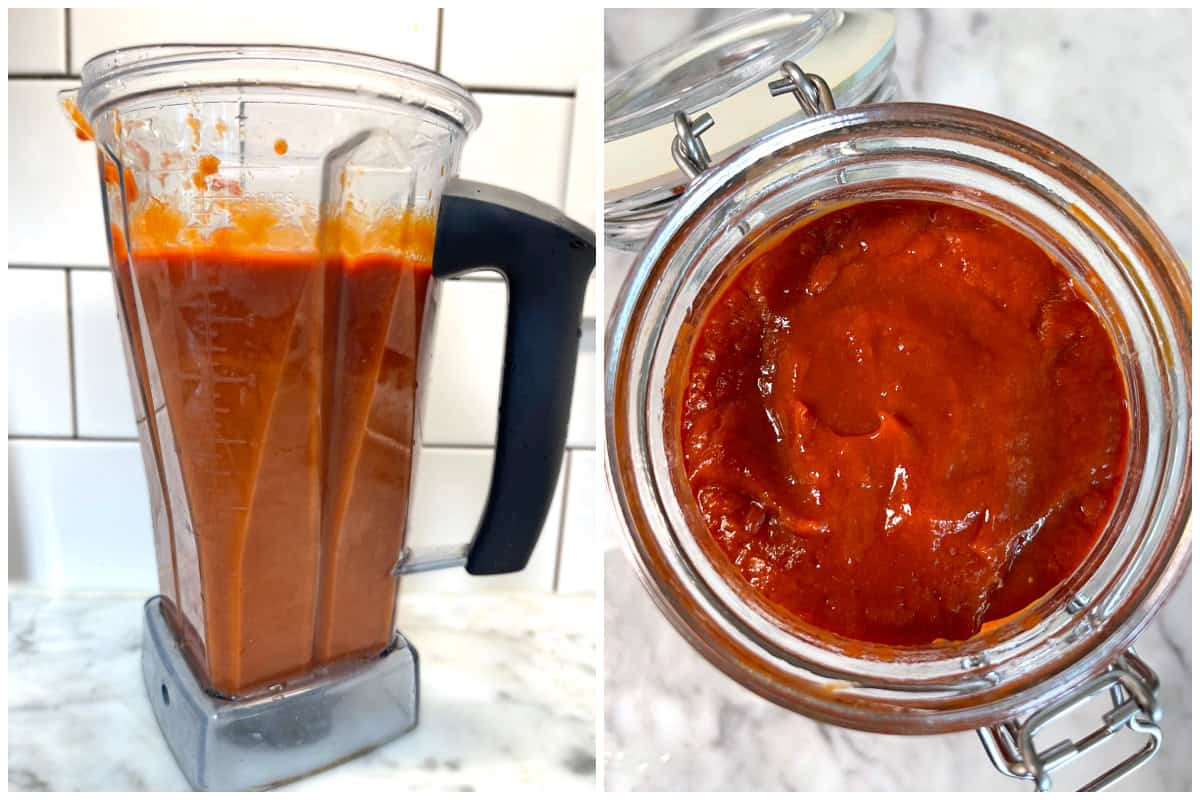
Canning Ketchup
This homemade ketchup is safe for canning using the water bath canning method. To can it, sterilize your canning jars and wash the canning lids. Ladle the hot ketchup into the jars, leaving 1/2 inch headspace. Place the lids on the jars and screw on the bands. Process in the boiling water bath canner for 15 minutes for quart-sized or smaller jars. Carefully remove the jars and let them sit undisturbed for 24 hours. Remove the bands and store in a cool, dark place where the homemade ketchup will keep for at least a year.
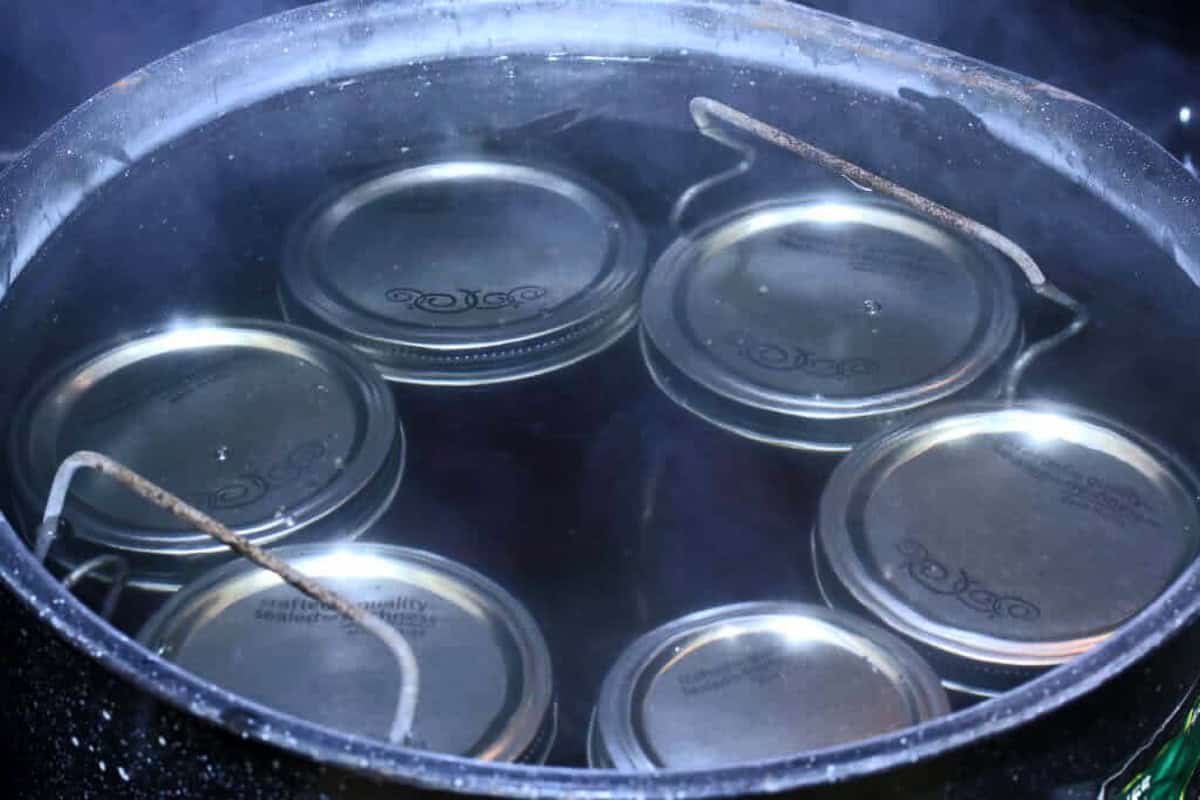
Does Ketchup Need to Be Refrigerated?
If you’ve canned your ketchup and it is sealed, no it does not require refrigeration. Once it is opened it needs to be stored in the fridge. There’s some debate whether commercial ketchup needs to be refrigerated, but homemade ketchup doesn’t contain the same chemicals and preservatives so it should be stored in the fridge in an airtight jar where it will keep for about a month. Very possibly longer, but check for signs of mold or off smells.
Can you Freeze Ketchup?
Most sources will tell you that you can. And while it’s true that ketchup can be frozen from a safety standpoint, freezing – or rather thawing – changes its texture and consistency. When ketchup defrosts there will typically be some separation of the water and the ketchup will become thinner, making it less than ideal for dipping. If you do freeze it, use freezer-safe containers or freezer bags, or you can also freeze it in ice cube trays and then transfer the cubes to a ziplock bag or container. It can be frozen for 4-6 months but seal the container well to avoid freezer burn.
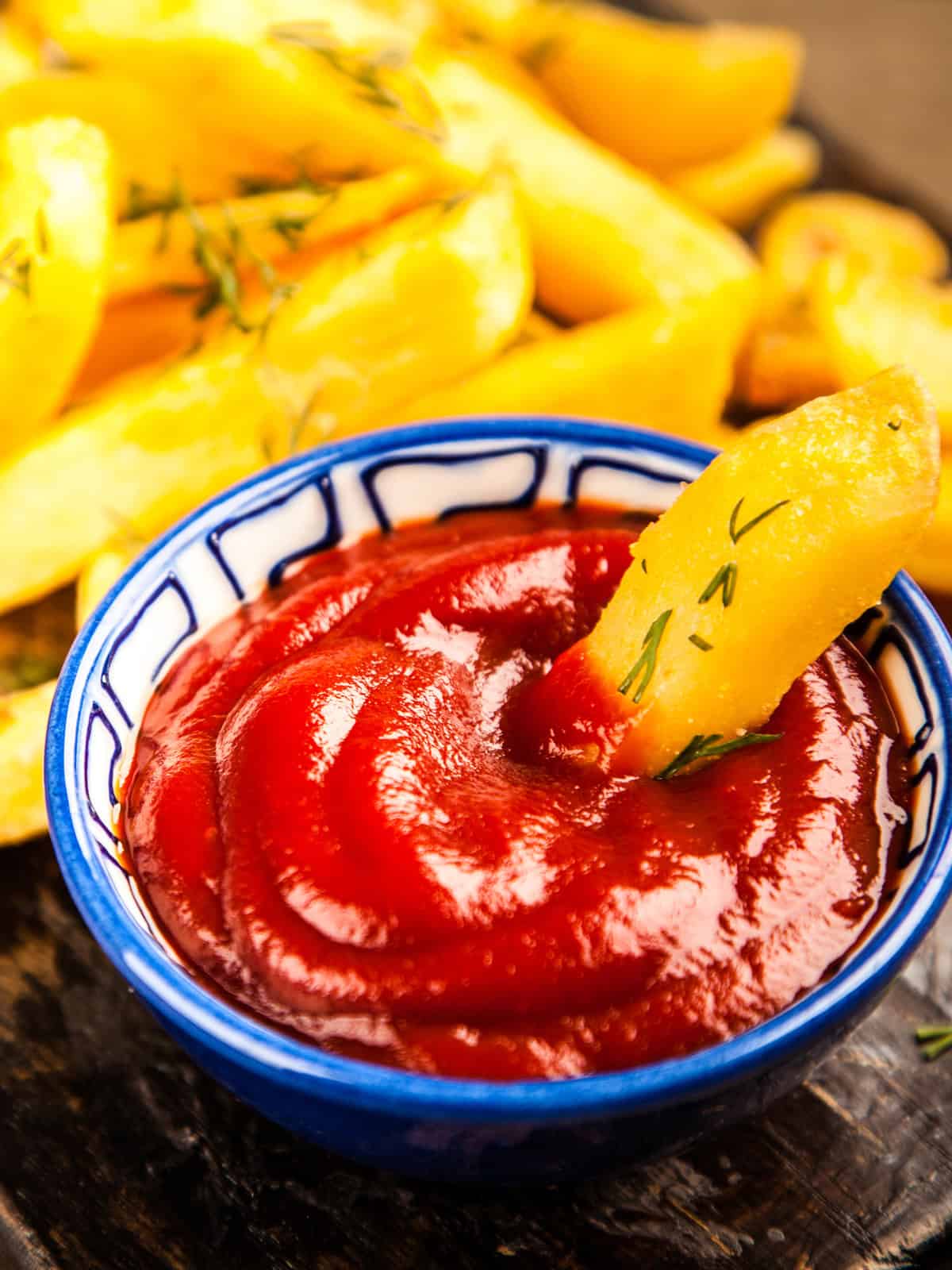
For more fabulous DIY condiments try my:
- Adobo Sauce
- Sriracha Mayo
- Big Mac Sauce
- Sweet Chili Sauce
- Aji Verde
- Harissa
- Tahini
- Romesco Sauce
- Sweet and Sour Sauce
- Teriyaki Sauce
- Plum Sauce
- BBQ Sauce
- Tartar Sauce
- Eel Sauce
- Kecap Manis
- Hoisin Sauce
- Black Bean Sauce
Save This Recipe

Homemade Ketchup
Equipment
- Canning jars (can use smaller or larger jars per your preference)
Ingredients
- 1 cup apple cider vinegar (5% acidity)
- 1/2 cup red wine vinegar (5% acidity)
- 2 tablespoons lemon juice
- 2 teaspoons whole cloves
- 1 teaspoon celery seeds
- 3/4 teaspoon whole allspice berries
- 1/2 teaspoon black peppercorns
- 1 cinnamon stick , broken into pieces
- 12 pounds fresh paste tomatoes (see blog post "Pro Tips" about using the correct tomatoes to avoid failure and frustration), quartered, seeded and stems removed
- 1 1/2 cups chopped yellow onions (about 2 medium onions)
- 1/2 teaspoon sweet paprika
- 1/2 teaspoon garlic powder
- 1/2 teaspoon onion powder
- 1/2 teaspoon ground mustard
- 3/4 cup granulated sugar
- 2 tablespoons kosher salt
Instructions
- Put the apple cider vinegar, red wine vinegar and lemon juice in a saucepan with the cloves, celery seeds, allspice berries, peppercorns and cinnamon stick and bring it to a boil. Boil for 2 minutes, then turn off the heat and let it sit for at least 30-60 minutes (this can be done well in advance). Strain and discard the spices. Set aside until ready to use.
- Put the tomatoes in a large stock pot (10 quart) along with the chopped onions, paprika, garlic powder, onions powder and ground mustard.Mash the tomatoes down a bit with a potato masher to release some of the juices. Bring the tomatoes to a boil, reduce the heat, and boil gently, uncovered, for 45 minutes or until the mixture is reduced by roughly 1/4, stirring occasionally.Pour in the spiced vinegar. Return the mixture to a boil, reduce the heat, and gently boil uncovered for another 45 minutes or until the mixture is reduced by another inch or so, or nearly half of what it was at the very beginning.
- Let the tomato mixture cool for just a few minutes so it's not scorching hot to work with. Then, working in batches, run the mixture through a food mill. Discard the seeds and tomato skins.You'll be left with a bowl of what looks like tomato juice and watery tomato bits. Don't panic that it doesn't remotely resemble ketchup at this point!
- Transfer the tomato mixture back to the pot and add the sugar and salt.Bring the mixture to a boil, reduce the heat and gently boil uncovered, stirring frequently until the mixture is reduced by half and is thick like ketchup. This will take at least 1-2 hours depending on the circumference of your pot and the heat level.Note: Do not try to speed up the process by increasing the heat or the tomato mixture will burn. Be sure to stir more frequently as the mixture thickens to prevent burning.The mixture is done when you have a thick tomato paste consistency with very little water separating from the tomatoes.
- Transfer the thickened tomato mixture to a blender and puree at high speed until it is smooth and creamy. This yields roughly 2 quarts (1.89 liters), or 8 cups, of ketchup. Store the ketchup in airtight glass jars in the fridge where it will keep for about a month. For long-term storage, this homemade ketchup is safe for water bath canning: To can it, sterilize your canning jars and wash the canning lids. Ladle the hot ketchup into the jars, leaving 1/2 inch headspace. Place the lids on the jars and screw on the bands. Process in the boiling water bath canner for 15 minutes for quart-sized or smaller jars. Carefully remove the jars and let them sit undisturbed for 24 hours. Remove the bands and store in a cool, dark place where the homemade ketchup will keep for at least a year.



















I can’t find the pro tips. Would Roma tomatoes be good for this recipe?
Hi Jacquie, yes, Roma tomatoes are “meaty” with minimal liquid so they’ll work well. Happy cooking!
I never thought ketchup would be something I would rave about but THIS is rave worthy! Soooooo delicious, this recipe takes ketchup to a whole new level!
Wonderful, thank you so much, Cheryl! :)
Bumper crops going on in my garden and I’ve already started my second batch of ketchup. This is an award-winning recipe right here, if I took this to my county fair I have almost zero doubt I’d take home first prize (and I may just have to give that some thought for next year!)
I’m thrilled that you enjoyed it, Paige, thank you so much for the feedback! <3
I never thought I’d refer to ketchup as amazing, but this really is! I can always trust your recipes.
Thank you so much, Gayle, I really appreciate that! <3
I’ve never been a big ketchup fan but my husband and kids are. I made this and I have to say it is hands down the best ketchup I’ve ever had. My family agrees.
That’s wonderful, thank you so much Tabitha!
This made the best ketchup I’ve ever had. There is ZERO comparison to Heinz or the like. It was definitely time-consuming though mostly just waiting it for it to simmer down, but it was 100% worth it.
I’m so thrilled to hear that, Candace, thank you so much! <3